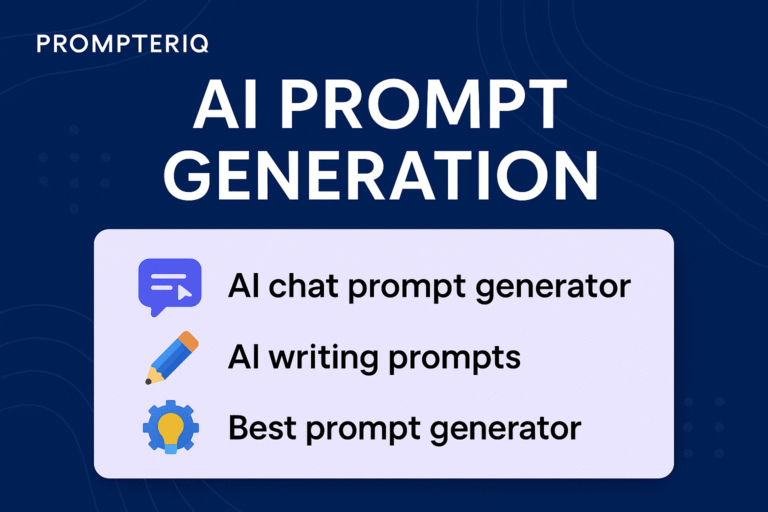Exploring LLM Prompts: Unlocking AI’s Potential
Have you ever wondered how AI systems understand and generate human-like text? The secret lies in something called an “llm prompt.” These prompts are the starting point for language models, guiding them to produce meaningful and contextually relevant responses. But here’s the thing: crafting the perfect llm prompt is both an art and a science. How can you harness this to unlock the full potential of AI? Let me share some insights that will transform how you interact with language models.
Understanding LLM prompts

Large Language Models (LLMs) are sophisticated AI systems capable of understanding and generating human language. At the core of these models are prompts—specific inputs that direct the model’s output. Think of prompts as the questions or topics you present to the AI, shaping the subsequent conversation. These prompts can be as simple as a single word or as complex as a detailed question.
The Role of Prompts in AI
Prompts play a critical role in the functionality of LLMs. They act as a bridge between the user and the AI, defining the context and scope of the interaction. For instance, a prompt like “Tell me about the history of the internet” will yield a vastly different response compared to “Explain how the internet works.” This distinction is crucial because it highlights how nuanced and precise prompts can significantly influence the quality and relevance of the AI’s output.
Crafting Effective LLM prompts
Creating effective LLM prompts requires a blend of creativity and precision. Here are some strategies to consider:
- Be Specific: The more detailed your prompt, the more focused the AI’s response will be.
- Use Contextual Clues: Providing context can help the AI generate more relevant answers.
- Experiment with Structure: Different phrasing can lead to different responses, so don’t hesitate to try various approaches.
Examples of Effective Prompts
Let’s explore some examples of well-crafted prompts:
- “What are the key benefits of renewable energy sources?” – Focuses the AI on listing benefits.
- “Describe the process of photosynthesis in plants.” – Guides the AI to explain a scientific process.
- “Compare and contrast the leadership styles of Steve Jobs and Bill Gates.” – Encourages an analytical response.
Historical Context and Evolution of LLMs

The journey of Large Language Models began with simpler algorithms designed for basic text generation. Over the years, advancements in machine learning and data availability have propelled the development of more sophisticated models capable of understanding and generating complex language. Early models were limited in scope, often producing generic or irrelevant responses. However, as researchers fine-tuned these models and incorporated vast datasets, the accuracy and relevance of AI-generated text improved significantly.
Key Milestones in AI Language Processing
| Year | Milestone |
|---|---|
| 1950s | Introduction of AI concepts and early language processing algorithms. |
| 1980s | Development of neural networks paving the way for modern AI. |
| 2010s | Emergence of large-scale language models like GPT. |
| 2020s | Breakthroughs in language synthesis and model training techniques. |
Practical Applications of LLM Prompts
LLM prompts have a wide range of applications across various fields. Businesses, educators, and developers leverage these prompts to enhance user experiences, automate customer service, and facilitate learning. Here are some practical applications:
- Customer Support: Automating responses to common queries saves time and resources.
- Content Creation: Assisting writers with ideas and drafting articles.
- Educational Tools: Providing personalized learning experiences through interactive dialogue.
Case Study: AI in Customer Service
Imagine a company that uses LLMs to manage its customer service operations. By crafting precise prompts, the company can automate responses to frequently asked questions, freeing up human agents to handle more complex issues. This not only improves efficiency but also enhances customer satisfaction as inquiries are addressed promptly.
Step-by-Step Tutorial on Crafting Prompts

To craft an effective prompt, follow these steps:
- Identify the Objective: Determine what you want the AI to accomplish.
- Draft the Prompt: Write a clear and concise input that aligns with your objective.
- Test the Prompt: Run it through the AI to see the results.
- Refine as Necessary: Adjust the wording for improved responses.
- Implement and Monitor: Use the prompt in real-world applications and monitor the outputs for consistency and accuracy.
Troubleshooting Common Issues
Even with a well-crafted prompt, issues can arise. Here are some common problems and solutions:
- Irrelevant Responses: Ensure the prompt is specific and contextually rich. A vague prompt may lead to off-topic answers.
- Repetitive Answers: Vary the structure of the prompt to encourage diverse outputs.
- Bias in Output: Regularly review AI responses to identify and mitigate any biases, adjusting prompts as necessary.
The Future of LLM Prompts
Looking ahead, the evolution of LLM prompts holds immense promise. As AI technology advances, we can expect more intuitive and context-aware systems capable of understanding complex human emotions and nuances. This will likely lead to even more personalized and engaging interactions between humans and machines.
Emerging Trends
Several trends are shaping the future of LLM prompts:
- Improved Natural Language Understanding: Enhanced algorithms will allow for more nuanced interpretations of prompts.
- Integration with IoT: Seamless interactions between AI and smart devices will become commonplace.
- Personalized AI Assistants: Tailored AI systems that adapt to individual user preferences and needs.
Future Predictions
Experts predict that as LLMs continue to evolve, the boundary between human and machine communication will blur, making interactions more fluid and natural. Additionally, we can anticipate AI systems that better understand context, tone, and even cultural references, making them more versatile in global applications.
Conclusion: Embracing the Potential of LLM Prompts
In conclusion, llm prompts are a powerful tool in the realm of AI, offering endless possibilities for innovation and efficiency. By understanding how to craft and utilize these prompts effectively, individuals and organizations can unlock new levels of productivity and creativity. As technology continues to evolve, staying informed and adaptable will be key to harnessing the full potential of LLMs. The future of human-AI collaboration looks promising, with LLM prompts leading the charge toward more intelligent and empathetic digital interactions.





